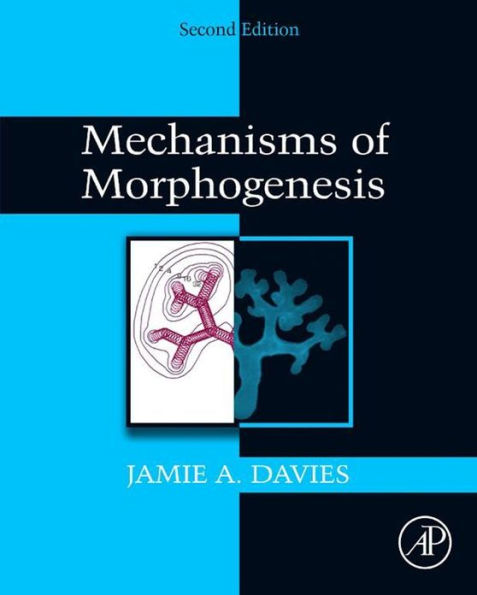Morphogenesis is the set of processes that generate shape and form in the embryo--an important area within developmental biology. An exciting and up-to-the-minute account of the very latest research into the factors that create biological form, Mechanisms of Morphogenesis, second edition is a text reference on the mechanisms of cell and tissue morphogenesis in a diverse array of organisms, including prokaryotes, animals, plants and fungi.
By combining hard data with computer modeling, Mechanisms of Morphogenesis, second edition equips readers with a much broader understanding of the scope of modern research than is otherwise available. The book focuses on the ways in which the genetic program is translated to generate cell shape, to direct cell migration, and to produce the shape, form and rates of growth of the various tissues. Each topic is illustrated with experimental data from real systems, with particular reference to gaps in current knowledge and pointers to future
- Includes over 200 four-color figures
- Offers an integrated view of theoretical developmental biology and computer modelling with laboratory-based discoveries
- Covers experimental techniques as a guide to the reader
- Organized around principles and mechanisms, using them to integrate discoveries from a range of organisms and systems
Morphogenesis is the set of processes that generate shape and form in the embryo--an important area within developmental biology. An exciting and up-to-the-minute account of the very latest research into the factors that create biological form, Mechanisms of Morphogenesis, second edition is a text reference on the mechanisms of cell and tissue morphogenesis in a diverse array of organisms, including prokaryotes, animals, plants and fungi.
By combining hard data with computer modeling, Mechanisms of Morphogenesis, second edition equips readers with a much broader understanding of the scope of modern research than is otherwise available. The book focuses on the ways in which the genetic program is translated to generate cell shape, to direct cell migration, and to produce the shape, form and rates of growth of the various tissues. Each topic is illustrated with experimental data from real systems, with particular reference to gaps in current knowledge and pointers to future
- Includes over 200 four-color figures
- Offers an integrated view of theoretical developmental biology and computer modelling with laboratory-based discoveries
- Covers experimental techniques as a guide to the reader
- Organized around principles and mechanisms, using them to integrate discoveries from a range of organisms and systems

Mechanisms of Morphogenesis
414
Mechanisms of Morphogenesis
414Related collections and offers

Product Details
| ISBN-13: | 9780124157576 |
|---|---|
| Publisher: | Elsevier Science & Technology Books |
| Publication date: | 02/18/2013 |
| Sold by: | Barnes & Noble |
| Format: | eBook |
| Pages: | 414 |
| File size: | 6 MB |
